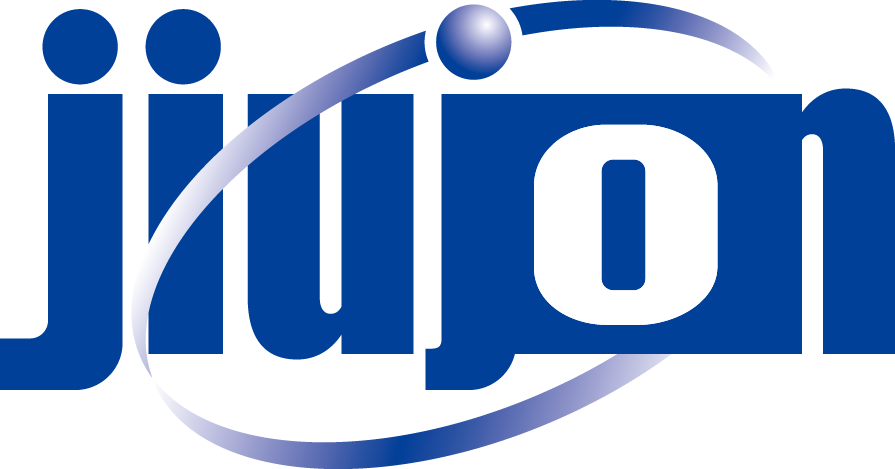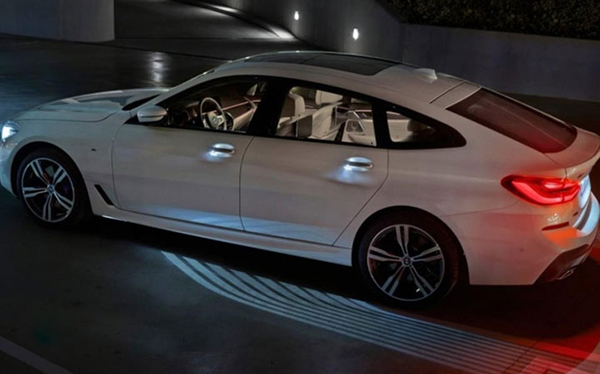
Microlens Array (MLA): It is composed of many micro-optical elements and forms an efficient optical system with LED. By arranging and covering the micro-projectors on the carrier plate, a clear overall image can be produced. Applications for MLA (or similar optical systems) range from beam shaping in fiber coupling to laser homogenization and optimal bundling of diode stacks of the same wavelength. The size of MLA ranges from 5 to 50 mm, and the structures in the architecture are significantly smaller than 1 mm.
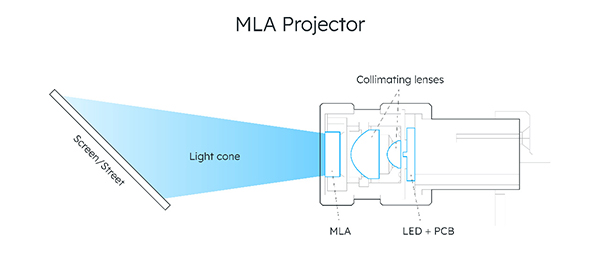
The structure of MLA: The main structure is as shown in the figure below, with the LED light source passing through the collimating lens, entering the MLA board, and being controlled and emitted by the MLA board. Because the projection light cone is not large, it is necessary to tilt the projection to elongate the projected pattern. The core component is this MLA board, and the specific structure from the LED light source side to the projection side is as follows:
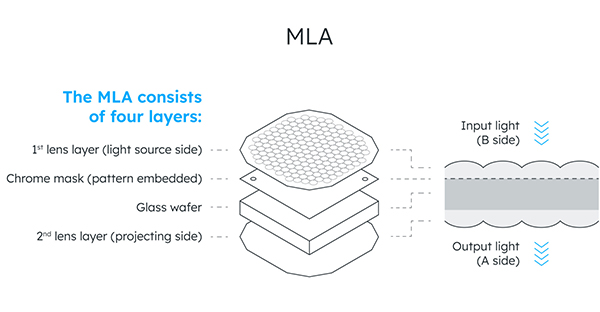
01 First layer micro lens array (focusing micro lens)
02 Chromium mask pattern
03 Glass substrate
04 Second layer micro lens array (projection micro lens)
The working principle can be illustrated using the following diagram:
The LED light source, after passing through the collimating lens, emits parallel light onto the focusing micro lens, forming a certain light cone, illuminating the etched micro pattern. The micro pattern is located on the focal plane of the projection micro lens, and is projected onto the projection screen through the projection micro lens, forming the projected pattern.
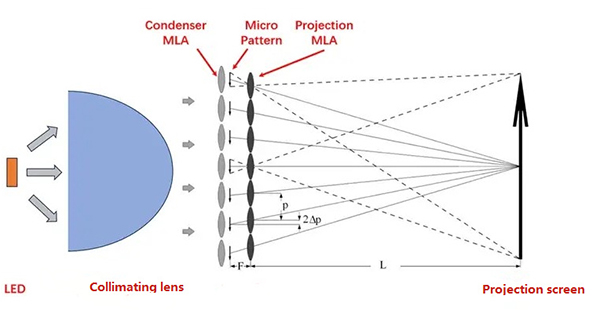
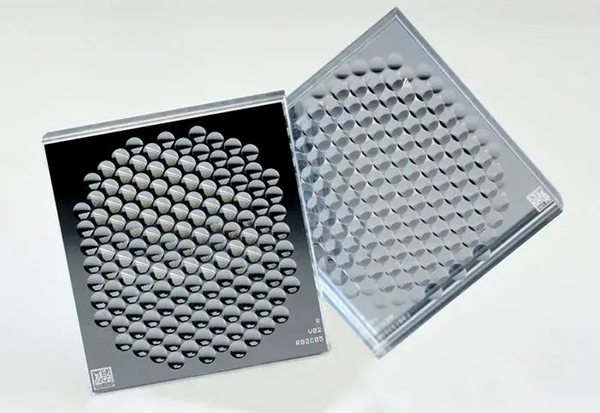
Function of lens in this situation:
01 Focus and cast light
The lens can focus and project light precisely, ensuring that the projected image or pattern is clearly visible at specific distances and angles. This is crucial for automotive lighting as it ensures that the projected pattern or symbol creates a clear and easily identifiable visual message on the road.
02 Enhance brightness and contrast
Through the focusing effect of the lens, MLA can significantly improve the brightness and contrast of the projected image. This is especially important for driving in low-light or nighttime conditions, as high-brightness, high-contrast projected images can improve driving safety.
03 Achieve personalized lighting
MLA allows automakers to customize unique lighting effects based on brand and design concepts. Precise control and adjustment of the lens enables automakers to create a variety of unique projection patterns and animation effects that enhance brand recognition and personalization of vehicles.
04 Dynamic light adjustment
The flexibility of the lens allows MLA to achieve dynamic lighting effects. This means the projected image or pattern can change in real time to suit different driving scenarios and conditions. For example, when driving on the highway, the projected lines can be longer and straighter to better guide the driver's eyes, while when driving on city roads, a shorter, wider pattern may be needed to better guide the driver's eyes. Adapt to complex traffic environments.
05 Improve lighting efficiency
Lens design can optimize the propagation path and distribution of light, thereby improving lighting efficiency. This means that MLA can reduce unnecessary energy loss and light pollution while ensuring sufficient brightness and clarity, and achieve a more environmentally friendly and energy-saving lighting effect.
06 Enhance visual experience
High-quality projection lighting can not only improve driving safety, but also enhance the driver's visual experience. Precise control and optimization of the lens can ensure that the projected image or pattern has better visual effects and comfort, reducing driver fatigue and visual interference.
Post time: Jun-24-2024
